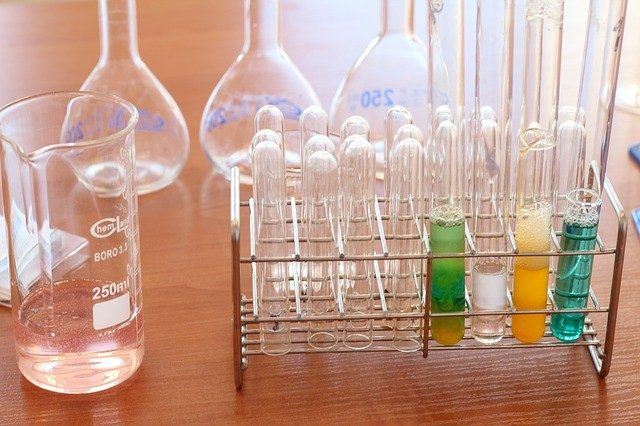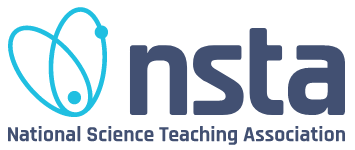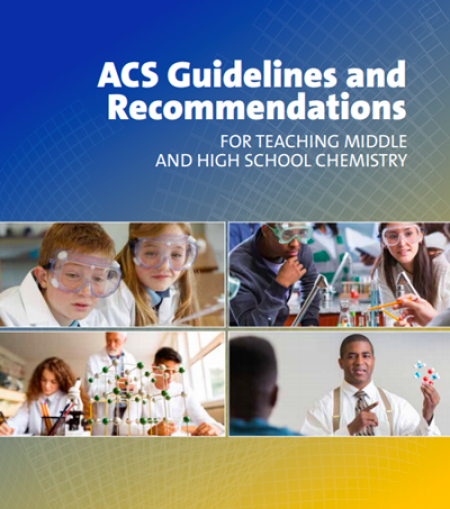The Laboratory
Lab work is an integral part of the chemistry experience. It allows students to explore chemical concepts, view changes in matter, and acquire scientific skills in an atmosphere that mimics a professional scientific environment.
The laboratory should be arranged so that instruction and lab skills can be practiced safely and effectively. All laboratories must be equipped with the essential safety equipment.
Science-Only Spaces
Science classrooms with scientific equipment and supplies should not be used for non-science courses or activities. The chemistry classroom often contains laboratory facilities. The classroom/laboratory should be vacant one period per day for safe lab preparation and maintenance. Teachers must have adequate preparation time. Lab activities should only be conducted in a science classroom/lab that is outfitted with proper lab and safety equipment. Special effort must be made to ensure that laboratory tables are never used for food activities.
Student lab stations should be arranged throughout the remaining work area; fixed stations are preferred. Arrangement of furniture must allow for adequate flexibility and teacher visibility of all students for supervision. If you have movable stations, consider upgrading to fixed stations. If the lab is not in the same space as the classroom, it should contain a fully equipped teacher station suitable for demonstrations and lab work.
The physical facilities provided for learning any science must be planned, built, arranged, and maintained to optimize student learning securely and safely. This is especially true for the teaching and learning of chemistry, where equipment and supplies not only offer the opportunity for basic and advanced learning but also present unique and serious hazards. Whether designing and building new space or updating an existing one, the planning team must carefully consider every detail that may impact teacher effectiveness as well as student learning and safety.
24 Students Per Classroom, 60 Square Feet Per Student
To ensure student safety with adequate supervision the National Science Teaching Association (NSTA) recommends a maximum of 24 students per classroom based on 60 square feet per student. NSTA has produced a position statement for middle and high school settings on the liability of science educators for laboratory safety that chemistry educators may wish to consult.
The square footage per student must meet state regulations. Different state mandates may require additional square footage. Space requirements may also be based on building and fire safety codes, appropriate supervision, and the special needs of students in the class.
Use Additional Space as Workstations for Safety and Accessibility
Additional areas should include a safety station and a station for students with disabilities. The arrangement of furniture must allow for adequate flexibility and supervision. For safety reasons, stools should not be in the walkways during laboratory investigations.
Workstations should have access to natural gas, water, and electricity. Electrical outlets built into the frame of the workstation and equipped with a ground-fault circuit interrupter (GFCI) must be away from water and gas outlets and should be available to appropriately accommodate computers and technology equipment.
Separate disposal containers should be clearly labeled for chemical waste and broken glassware. Cabinetry within the workstations, or placed around the perimeter of the room, should be used to store supplies and serve as storage for additional lab equipment. Cabinets used for storing laboratory equipment should be selected to accommodate long or heavy equipment. There should be a secured chemical storage area, either attached to the room or elsewhere, locked when not in use. Chemical storage should not be in the classroom or lab. Access must be limited to science teachers and authorized personnel only.
For the Middle School Setting
A middle school laboratory may be a classroom with laboratory tables and sinks available. The space should be set up in a way that facilitates classroom activities and laboratory work. Many of the substances used at the middle school level are often part of those seen in household inventory; however, once the chemicals are moved to the teaching environment they should be treated as laboratory chemicals. Students should be taught that no chemicals used in the science laboratory should be tasted or consumed. Even though the chemicals are purchased at the store, in the lab they should only be smelled by wafting and under teacher instruction. All household items that are used in a laboratory setting should be labeled, “NOT FOR HUMAN CONSUMPTION.”
Lab Equipment Checklist
-
Middle School Lab Equipment
- Balance (0.1 g)
- Weighing boats
- Spatulas/scoopulas
- Tongs
- Hot plates
- Beakers, various sizes
- Erlenmeyer flasks, various sizes
- Alcohol and/or digital thermometer
- Graduated cylinders
- Labeling tape, permanent marker, or grease pencil
- Molecular modeling kits
- Test tubes
- Test tube racks
- Funnels
- Filter paper
- Petri dishes
-
High School Lab Equipment
Must-Have Items (with Details)
- Distilled water
- Distilled water bottles, clearly labeled
- Ability to make distilled water, or distilled water source
- Distilled water bottles, clearly labeled
- Electronic balances
- Centigram (0.01 g)
- Weighing dishes
- Small and medium size
- Bunsen burners
- Enough for each lab group to have access to one
- Label tape, permanent marker, or grease pencils
- To label glassware
- Metal spatulas (microspatulas and scoopulas)
- Tongs
- Test tube clamps and holders
- Hot plates with magnetic stirring capabilities
- Stir bars
- Watch glass
- Microscale equipment
- All can be labeled, stored, and reused
- Microtip pipets
- Straight-stem pipets
- Combination plates
- Thermometers
- Alcohol (not mercury) and/or digital
- Drying oven
- Wooden splints
- pH paper
- Glassware
- Various sizes
- Beakers
- Erlenmeyer flasks
- Volumetric flasks
- Graduated cylinders
- Test tubes
- Burets
- Stirring rods
- Buret clamps
- Test tube racks
- Storage bottles
- Plastic
- Dropper bottles
- For dispensing chemicals in labs
- Chromatography paper
- Funnels
- Filter paper
- Ring stands
- Iron rings
- Molecular modeling kits
Nice-to-Have Items (with Details)
- Laminated periodic tables
- Desiccator
- Beaker tongs
- Striker (to light Bunsen burner)
- Power supply and spectral tubes
- Volumetric pipets
- Pipet bulbs
- Ring clamps
- Mortar and pestle
- Rubber stoppers
- Evaporating dishes
- Crucibles
- Wire gauze
- Clay triangles
- Crucible tongs
- Rulers
- Calculators
- Inexpensive, class set
- Digital probes
- Temperature
- Pressure
- Colorimeter with cuvettes
- pH
- Conductivity
- Distilled water
ACS Guidelines and Recommendations
for Teaching Middle and High School Chemistry
An essential resource for middle and high school physical science and chemistry teachers, curriculum developers, principals, and other school administrators who support teachers in those roles.
Learn about the nature of instruction, the core ideas to teach, the physical instructional environment, safety, sustainability, and the professional responsibilities of teachers.




